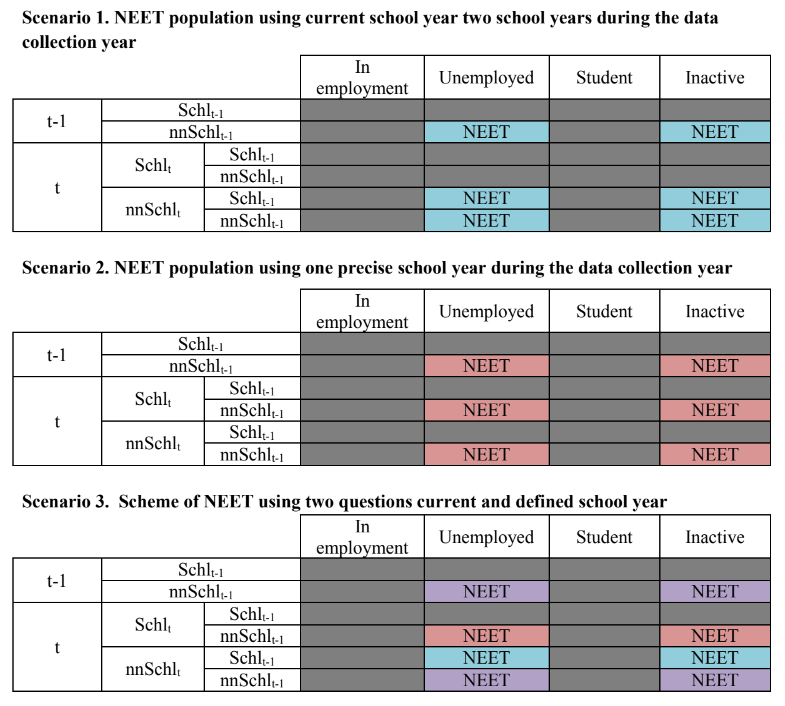Discussing the measurement of the NEET's "not in formal education" component through surveys spanning 2 school years.
Conference
64th ISI World Statistics Congress - Ottawa, Canada
Format: CPS Paper
Keywords: current potential labor force, formal education, harmonization, neet, sdgs, social exclusion, youth
Abstract
The NEET rate was officially introduced back in 1999, in the “Bridging the gap” report elaborated by the Britain’s Social Exclusion Unit, as an indicator to measure the risk of social exclusion of young people aged from 16 to 18 years old. This indicator has known many changes through time, cross-countries and between international organizations. Nowadays it is calculated for young people aged from 15 to 24 years old and aims to measure the potential labor force. Besides these changes, the SDGs metadata provided for the purpose of this indicator might be ambiguous for some countries in terms of how participation to formal education should precisely be collected, especially through surveys conducted over a data collection period spanning more than one school year. The present paper discusses the different scenarios and approaches a country could adopt to measure the formal education component of the NEET rate for surveys spanning 2 school years, and points out the impact these differences could have on the international comparability and on the monitoring of the target 8.6 of the SDGs (Substantially reduce the proportion of youth not in employment, education or training - SDG 8).
Figures/Tables
Scenarios NEET Formal education

